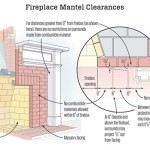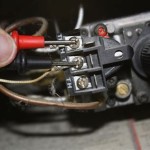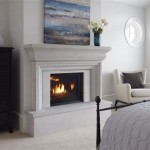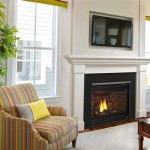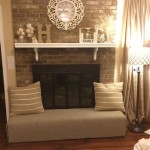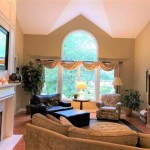Stand-Alone Wood Burning Fireplaces: A Comprehensive Guide
Stand-alone wood-burning fireplaces offer a compelling combination of aesthetic appeal and functional heating. Unlike traditional masonry fireplaces built into a wall, these self-contained units can be positioned virtually anywhere with proper venting, providing flexibility in design and placement. This article explores the advantages, considerations, installation, and maintenance aspects of stand-alone wood-burning fireplaces, offering comprehensive information for prospective buyers and owners.
The allure of a wood-burning fireplace is undeniable. It evokes a sense of warmth, ambiance, and nostalgia, conjuring images of cozy evenings spent by the fire. While modern heating systems offer efficient and convenient climate control, a wood-burning fireplace provides a unique sensory experience that goes beyond mere temperature regulation. The crackling sound of burning wood, the mesmerizing dance of the flames, and the distinctive aroma all contribute to a relaxing and inviting atmosphere. Stand-alone models enhance this experience by allowing homeowners to integrate this focal point into various living spaces.
Stand-alone wood-burning fireplaces function by combusting wood within a contained firebox. The heat generated warms the surrounding space through radiant heat and convection. Radiant heat directly warms objects and people in the line of sight, while convection circulates heated air throughout the room. The efficiency of a wood-burning fireplace is dependent on its design, construction materials, and the type of wood used. Modern models often incorporate features such as airtight doors, catalytic combustors, and secondary burn systems to improve efficiency and reduce emissions.
Advantages of Stand-Alone Wood Burning Fireplaces
One of the primary advantages of a stand-alone wood-burning fireplace is its installation flexibility. Unlike built-in fireplaces that require significant structural modifications, stand-alone units can be installed in almost any room with access to an approved venting system. This allows homeowners to add a fireplace to existing homes without undertaking extensive renovations. This ease of installation translates to reduced costs compared to traditional masonry fireplaces, making them a more accessible option for homeowners on a budget.
Another key benefit is the aesthetic versatility they provide. Stand-alone fireplaces are available in a wide range of styles, sizes, and finishes, allowing homeowners to choose a model that complements their existing decor. From rustic cast iron designs to sleek modern models with glass doors, there is a stand-alone fireplace to suit virtually any taste. The ability to position the fireplace strategically within a room further enhances its visual impact, creating a focal point that draws the eye and adds character to the space.
Beyond aesthetics and installation, many stand-alone wood-burning fireplaces offer impressive heating capabilities. While their primary function is often to create ambiance, they can also serve as a supplemental heat source, particularly during power outages or in homes with inefficient central heating systems. High-efficiency models can effectively heat a significant portion of a home, reducing reliance on other heating methods and potentially lowering energy costs. It’s crucial to select a fireplace with appropriate BTU (British Thermal Unit) output for the size of the space to be heated.
Key Considerations Before Purchasing
Before investing in a stand-alone wood-burning fireplace, several factors should be carefully considered. The first is the size of the space to be heated. A fireplace that is too small will not effectively warm the room, while one that is too large can create an uncomfortable environment. Calculating the square footage of the room and consulting with a fireplace professional will help determine the appropriate BTU output for optimal heating.
Venting is another critical consideration. Wood-burning fireplaces require a properly installed and maintained venting system to safely exhaust smoke and combustion gases. The type of venting required will depend on the fireplace model and local building codes. Options include chimney systems, direct-vent systems, and through-the-wall venting systems. It is essential to hire a qualified professional to install the venting system to ensure it meets safety standards and operates efficiently. Improper venting can result in dangerous carbon monoxide buildup and fire hazards.
Wood storage and handling are also crucial aspects of owning a wood-burning fireplace. An adequate supply of seasoned firewood is necessary to fuel the fireplace throughout the heating season. Seasoned wood, which has been dried for at least six months, burns more efficiently and produces less smoke than green wood. Proper storage is essential to keep the wood dry and protected from the elements. Consider the location and accessibility of the wood storage area when planning for a stand-alone fireplace.
Installation and Maintenance
The installation of a stand-alone wood-burning fireplace should always be performed by a qualified professional. Improper installation can compromise the safety and efficiency of the fireplace. The installer will ensure that the fireplace is properly positioned, the venting system is correctly installed, and all clearances to combustible materials are met. A professional installation will also ensure compliance with local building codes and regulations.
Regular maintenance is essential to keep a stand-alone wood-burning fireplace operating safely and efficiently. This includes cleaning the chimney regularly to remove creosote buildup. Creosote is a highly flammable substance that can accumulate in the chimney over time, posing a significant fire hazard. The frequency of chimney cleaning will depend on the amount of wood burned and the type of wood used. A professional chimney sweep can inspect and clean the chimney, ensuring it is free of obstructions and creosote.
In addition to chimney cleaning, the fireplace itself should be inspected and maintained regularly. This includes checking the firebox for cracks or damage, cleaning the glass door (if applicable), and inspecting the air vents for obstructions. The ash should be removed regularly to prevent buildup and maintain proper airflow. Following the manufacturer's recommendations for maintenance will help prolong the life of the fireplace and ensure its safe operation.
Selecting the right type of wood is also directly tied to maintenance and overall efficiency. Hardwoods, such as oak, maple, and ash, are generally preferred for wood-burning fireplaces because they burn longer and produce more heat than softwoods. Softwoods, such as pine and fir, tend to burn quickly and produce more smoke and creosote. Using seasoned hardwoods will result in a cleaner, more efficient burn and reduce the risk of chimney fires.
The operational aspects of a stand-alone wood-burning fireplace influence its longevity and safety. Always ensure adequate ventilation in the room where the fireplace is located, and never leave a burning fire unattended. Keeping a fire extinguisher nearby is a prudent safety measure. Understanding the operational nuances, like proper air control for optimal burning and efficient heat dispersal into the room, maximizes utility and minimizes risks with these fireplaces.
Understanding the different types of stand-alone wood-burning fireplaces available is crucial for making an informed decision. Options range from traditional cast iron stoves to modern, EPA-certified models. EPA-certified fireplaces are designed to burn more efficiently and produce fewer emissions than older models. They often incorporate features such as catalytic combustors and secondary burn systems to reduce pollution and improve fuel efficiency. Investing in an EPA-certified fireplace is not only environmentally responsible but can also result in lower fuel costs over time.
The cost of a stand-alone wood-burning fireplace can vary widely depending on the model, features, and installation requirements. The initial purchase price is just one aspect of the overall cost. Installation costs, including venting and labor, can add significantly to the total expense. Ongoing costs, such as firewood and maintenance, should also be factored into the budget. While stand-alone wood-burning fireplaces can be a cost-effective heating solution, it is essential to carefully consider all associated costs before making a purchase.
In conclusion, a stand-alone wood-burning fireplace can be a valuable addition to any home, providing warmth, ambiance, and a focal point for gathering. By carefully considering the advantages, considerations, installation, and maintenance aspects outlined in this article, homeowners can make an informed decision and enjoy the benefits of a wood-burning fireplace for years to come. It is crucial to prioritize safety and efficiency when selecting and operating a stand-alone wood-burning fireplace to ensure a positive and rewarding experience.
Dru Fire
Dru Fire

Studio 2 Freestanding Wood Burning Stove Stovax Stoves

Freestanding Wood Burning Stoves Sierra Hearth And Home
Dru Fire

How To Buy A Wood Stove Buyer S Guide From Regency

Wood

Studio 1 Freestanding Wood Burning Stove Stovax Stoves

Wood

What Is A Freestanding Wood Stove Fireplace Service Experts

